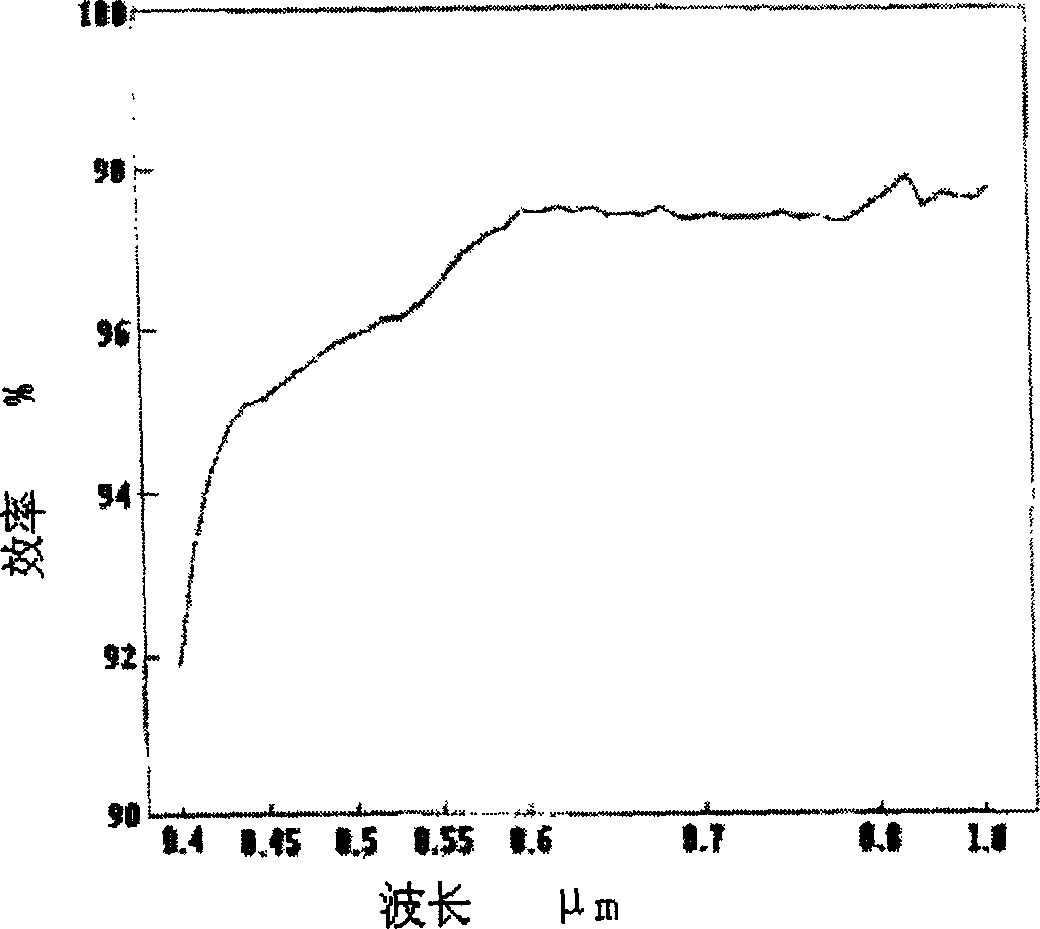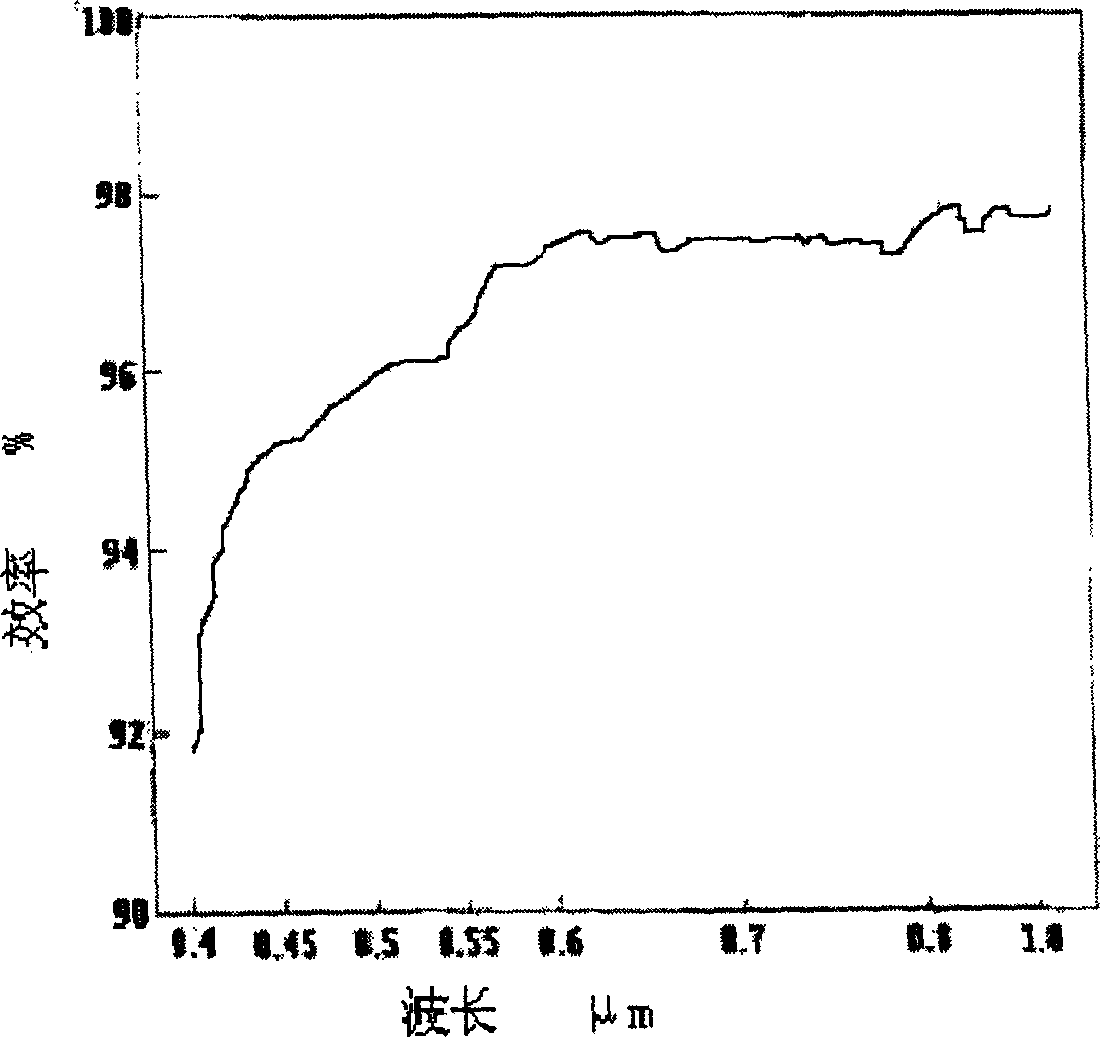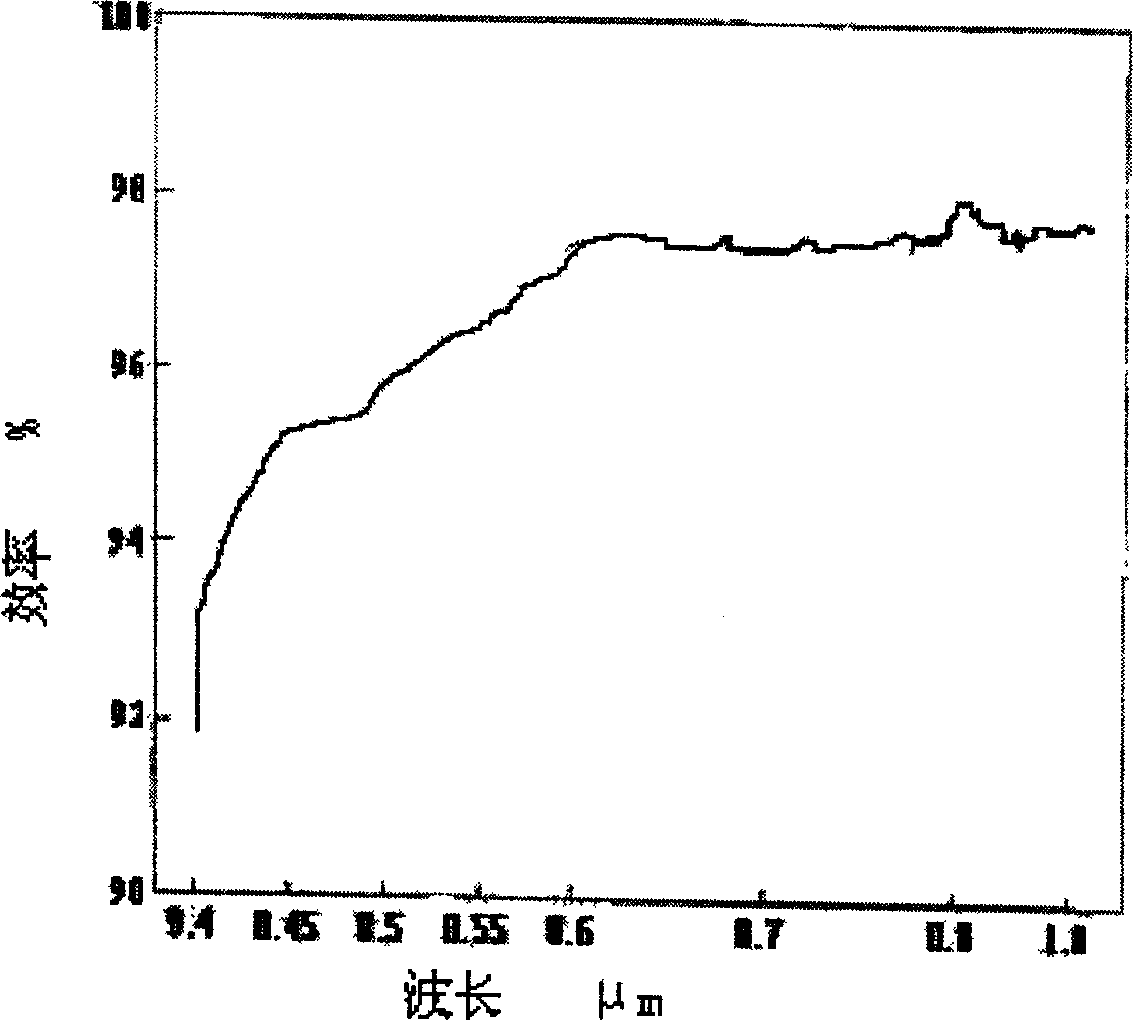Method for producing ceramic cavity with high reflectivity
A high reflectivity, cavity technology, used in ceramic molding machines, manufacturing tools, etc., can solve the problems of output power limitation and low laser electro-optical conversion efficiency.
- Summary
- Abstract
- Description
- Claims
- Application Information
AI Technical Summary
Problems solved by technology
Method used
Image
Examples
Embodiment 1
[0028] The first step is to prepare alumina powder with a powder diameter of 100nm, mix the alumina powder with ethanol or ether into mud, and spread it evenly in the designed ceramic cavity mold, and the thickness of each laying is 1mm. After each layer is laid, it is pretreated, that is, the alumina powder is heated and pressurized, the pressure range is 1000kg, the temperature range is 700°C, and the duration is 9 hours. The total thickness of the laying is 14mm to complete the formation of the alumina cavity.
[0029] In the second step, the formed alumina cavity is sintered, the sintering temperature range is 1500°C, and the holding time is 8 hours. The sintering atmosphere is maintained in the sintering furnace, and the gas in the sintering furnace is a mixed gas, wherein the volume percentage ranges of oxygen and nitrogen are 30% and 70% respectively.
[0030] In the third step, the surface of the alumina ceramic cavity is processed on a grinding machine, and the surfac...
Embodiment 2
[0035] The first step is to prepare alumina powder with a powder diameter of 90nm, mix the alumina powder with ethanol or ether into mud, and spread it evenly in the designed ceramic cavity mold, and the thickness of each laying is 0.8mm , each layer is pretreated, that is, the alumina powder is heated and pressurized, the pressure range is 600kg, the temperature range is 500°C, the duration is 6 hours, and the total thickness of the laying is 12mm to complete the formation of the alumina cavity.
[0036] In the second step, the formed alumina cavity is sintered, the sintering temperature range is 1200°C, and the holding time is 6 hours. The sintering atmosphere is maintained in the sintering furnace, and the gas in the sintering furnace is a mixed gas, wherein the volume percentage ranges of oxygen and nitrogen are 35% and 65% respectively.
[0037] In the third step, the surface of the alumina ceramic cavity is processed on a grinding machine, and the surface roughness is le...
Embodiment 3
[0042]The first step is to prepare alumina powder with a powder diameter of 110nm, mix the alumina powder with ethanol or ether into mud, and spread it evenly in the designed ceramic cavity mold, and the thickness of each laying is 1.2mm , each layer is pretreated, that is, the alumina powder is heated and pressurized, the pressure range is 1200kg, the temperature range is 800°C, the duration is 10 hours, and the total thickness of the laying is 15.6mm to complete the formation of the alumina cavity .
[0043] In the second step, the formed alumina cavity is sintered, the sintering temperature range is 1700°C, and the holding time is 10 hours. The sintering atmosphere is maintained in the sintering furnace, and the gas in the sintering furnace is a mixed gas, wherein the volume percentage ranges of oxygen and nitrogen are 40% and 60% respectively.
[0044] In the third step, the surface of the alumina ceramic cavity is processed on a grinding machine, and the surface roughnes...
PUM
| Property | Measurement | Unit |
|---|---|---|
| diameter | aaaaa | aaaaa |
| surface roughness | aaaaa | aaaaa |
| reflectance | aaaaa | aaaaa |
Abstract
Description
Claims
Application Information
 Login to View More
Login to View More - R&D Engineer
- R&D Manager
- IP Professional
- Industry Leading Data Capabilities
- Powerful AI technology
- Patent DNA Extraction
Browse by: Latest US Patents, China's latest patents, Technical Efficacy Thesaurus, Application Domain, Technology Topic, Popular Technical Reports.
© 2024 PatSnap. All rights reserved.Legal|Privacy policy|Modern Slavery Act Transparency Statement|Sitemap|About US| Contact US: help@patsnap.com










